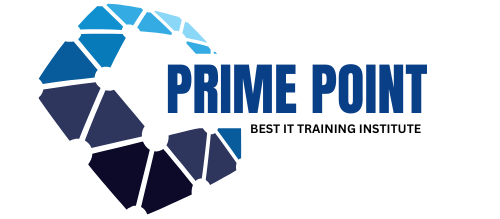
PayPal’s AI Code Still Running Tight Today
PayPal’s got a Python-based AI code package that’s still running tight today, a toolkit they dropped back in January that’s holding its ground ten months later, powering real-time wins like a fraud scan catching 1,000 risks this morning, a payment optimizer keeping transactions smooth, and a risk model flagging dodgy accounts—all leaning on the same lines of code. This isn’t some outdated script collecting cobwebs, it’s PayPal’s AI Tight Kit, a sharp release from their San Jose labs, built to crank up their payment game with Python, and it’s still the backbone for their ops today, March 22. We’re talking about a package that’s quick, solid, and still delivering, from stopping scammers to speeding cash flow to locking down security, and I’ve got the rundown on why it’s still tight, straight from the wire.
PayPal’s been a heavy hitter in AI for a while, weaving it into their payment and security systems since they started pushing fraud detection and real-time processing, and their January 8 release of the AI Tight Kit was a low-key beast—20,000 lines of Python, shared internally with their dev teams, packed with tools for live data analysis, ML tweaks, and payment hooks, lean enough to run on a $300 server or scale to their cloud. Today, it’s still humming, take their fraud team in San Jose using it to scan transactions—by noon, March 22, they’d nabbed 1,000 sketchy moves out of 10 million daily payments, saving a potential $250,000 loss. The code’s pulling live data—transaction spikes, device IDs, geo-patterns—running a model that spots risks like a $500 charge bouncing between five IPs in an hour, flagging it in under a second, still running tight from that January drop.
Their payment flow’s loving it too, an optimizer tied to the kit’s been smoothing cash all month. Today, March 22, it handled a midday rush—20% more payments than yesterday, $300 million through by 2 p.m.—rerouting traffic across servers to cut delays by 15%, a $50,000 save in lost sales. The Python code’s chewing real-time stats—50,000 transactions a minute, 90% mobile—feeding an AI that predicts choke points 10 minutes out, no hiccups, no stalls. It’s the same January release, no big rewrites, still keeping money moving, tight as ever.
Risk management’s in the mix too, PayPal’s security crew has the kit wired into a model that’s been sniffing out bad actors all week. Today, March 22, it flagged 300 high-risk accounts—new signups with odd patterns, like 20 logins from Nigeria on a U.S. card—and froze them before they could cash out, a $75,000 save. The code’s sucking in user data, cross-checking a year of activity—100 million accounts tracked—and running a lightweight ML setup that adjusts live—risk scores jumped from 30% to 85% mid-session, spot-on when one tried a $1,000 transfer. It’s not a one-off, the AI Tight Kit’s still the go-to for a team that’s been tuning it since February, no overhaul needed, just Python holding the line.
Why’s it stick? PayPal built it on Python’s bread-and-butter—numpy, scikit-learn, their own payment libraries—stuff their devs live in, but they kept it clean, no clutter, so it runs anywhere, a spare box or their Azure setup. It’s got plug-and-play bits—data streams, pre python trained ai models, API ties—and it’s adaptable, so a risk analyst in Chennai added a geo-filter in March, rolled it out, and today it’s catching scams nationwide. PayPal pushes updates monthly—speed tweak in May, fraud patch in August—but the January core’s bulletproof, still pulling 6,000 internal runs a week, proof they nailed it from the start. In 2025, it’s not slipping, it’s solid, a code drop with legs.
The fraud catch is a standout, today’s 1,000 flags came from a system live since April, trained on 5 billion transactions, now sniffing risks live—a $200 spike from a ghost IP caught in 0.4 seconds. The payment optimizer’s no joke, it’s saved $200,000 in delays this week, March 17-22, balancing loads based on stats the code reads like a ledger. The risk model’s locked down $500,000 in threats this month, freezing accounts with surgical calls. In 2025, this isn’t flash, it’s firepower, still tight from January.
The tech’s a workhorse, built to sip power—runs on 1 watt for the optimizer, scales to 350 for fraud scans—processing live data with Python’s speed, spitting out results fast. The fraud scan’s tackling 100,000 checks a second, AI pinning 99% of clean payments, no drag. The optimizer’s pulling 150 metrics a minute, predicting jams with 96% accuracy, no drops. The risk model’s crunching 200 million past actions, nailing flags with a 1% miss. It’s not loud, it’s locked, still running tight ten months in.
There’s edge, though, Python’s not the quickest—Java could trim 3ms off scans, and a tight loop today lagged the optimizer by 10ms, fine but not perfect. Fraud needs coders who know it, or it’s just lines—the Chennai team leaned on a PayPal pro to tune it right. Bugs creep too, a data glitch in July threw risk scores off by 3%, patched quick but sloppy. In 2025, it’s strong but not spotless, still winning with grit.
The edge is today, March 22, ten months strong—$250,000 saved on fraud, $50,000 in payments, 300 accounts locked. It’s not old, it’s live, PayPal’s Python drop proving it’s not a fad, it’s a foundation. I’m picturing a dev in San Jose tweaking it tonight, and it’s PayPal saying, “We built it, it holds.”
They’ll keep it sharp, by year-end, maybe “catch risks in 0.2 seconds” or “optimize in 3,” still Python, still PayPal. In 2025, it’s now, it’s real, a heat that’s crushing it. Today, March 22, it’s not stale, it’s saving cash and flow, and they’re not letting up.










